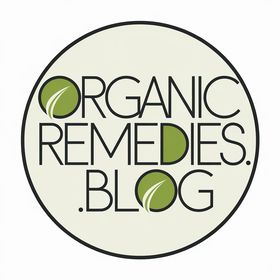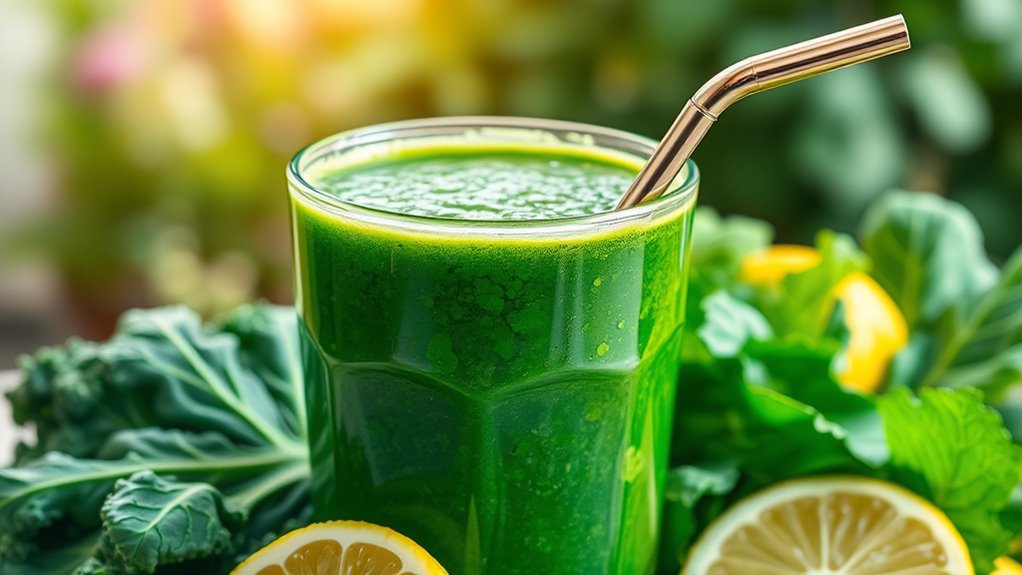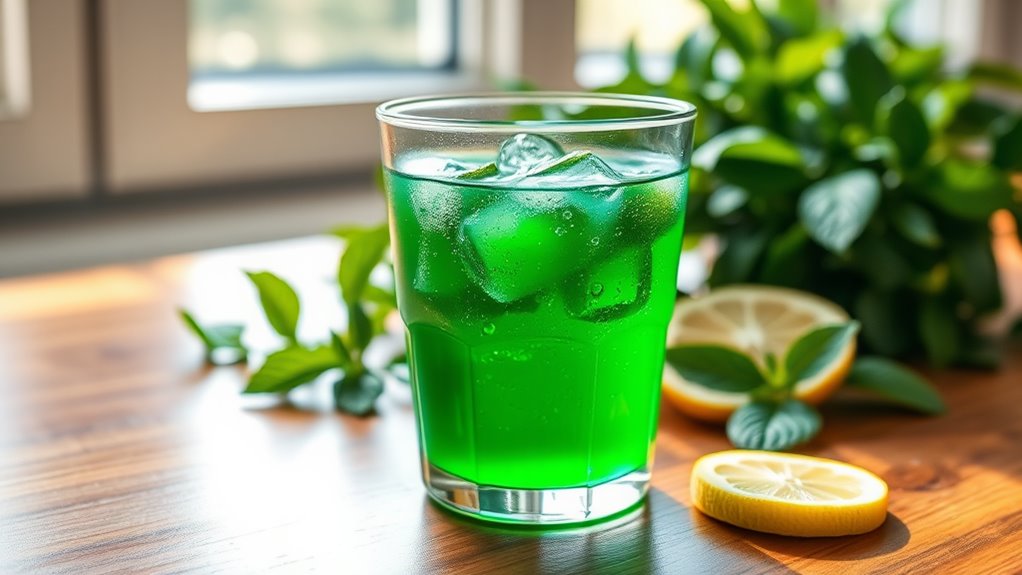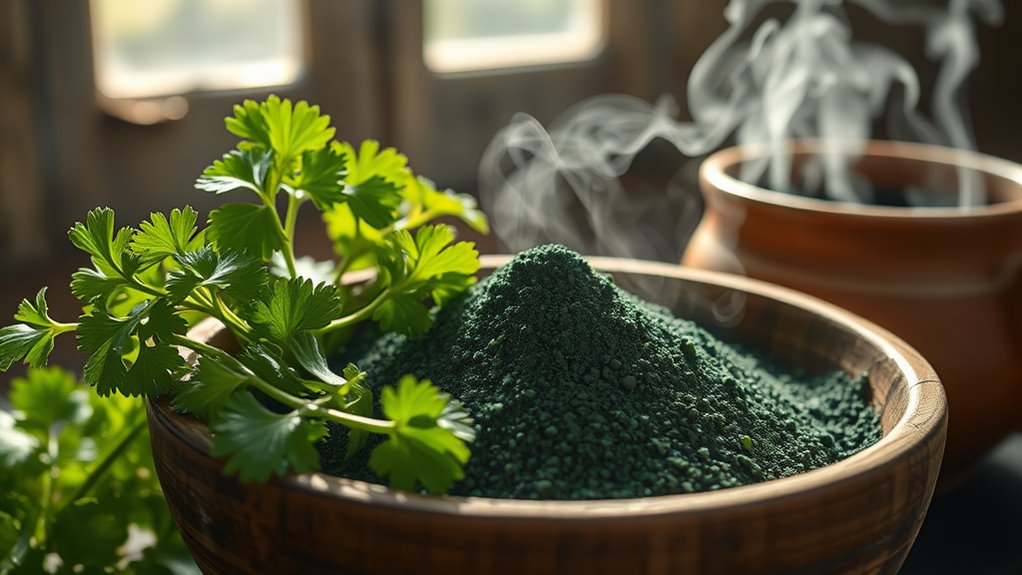Heavy Metals Destroying Your Health – Easy Home Detox Solution
Heavy metals can seriously undermine your health, causing fatigue, cognitive decline, and digestive issues. Common sources like contaminated water, certain fish, and outdated paints expose you to these toxic elements. To detox at home, consider dietary changes that include antioxidant-rich fruits and vegetables, hydrate regularly, and incorporate supportive herbs for liver health. Avoid processed foods and high-mercury seafood. By adopting natural detox solutions, you can restore balance in your body and improve overall well-being. Discover more strategies below.
Understanding Heavy Metals and Their Impact on Health
Heavy metals, such as lead, mercury, and cadmium, pose significant health risks that often go unnoticed until symptoms manifest.
You may experience fatigue, cognitive decline, or digestive issues without realizing the underlying cause.
Engaging in a natural heavy metal detox can help cleanse your body and restore balance. Regular testing in home and workplace helps identify exposure sources to ensure you are aware of potential dangers.
Understanding these metals’ impact is crucial for your long-term health and well-being.
Common Sources of Heavy Metal Exposure
Many people are unaware of the everyday sources that contribute to heavy metal exposure. Common culprits include contaminated water, certain fish, outdated paints, and industrial emissions.
You may also encounter heavy metals in dental fillings, cosmetics, and even some food items. Identifying these sources is crucial for minimizing your risk and protecting your health from the harmful effects of heavy metals.
Symptoms of Heavy Metal Toxicity
How can you tell if you’ve been affected by heavy metal toxicity? Common symptoms include fatigue, headaches, digestive issues, and mood swings.
You might also experience memory problems or difficulty concentrating. In some cases, physical signs like skin rashes or neurological changes may emerge.
If you notice these symptoms persistently, it’s essential to assess your exposure and consider seeking professional advice.
Natural Detox Solutions You Can Try at Home
To effectively detox from heavy metals at home, you can start by implementing dietary changes that support your body’s natural elimination processes.
Incorporating specific herbal remedies can also enhance healing and aid in your recovery. Supporting liver health is essential since the liver plays a crucial role in processing toxins and promoting overall well-being.
Focusing on these strategies empowers you to take control of your health and well-being.
Dietary Changes for Detox
While detoxing from heavy metals may seem daunting, incorporating specific dietary changes can significantly enhance your body’s natural elimination processes.
Focus on consuming fresh fruits and vegetables, particularly those high in antioxidants, like berries and leafy greens.
Additionally, increase your intake of fiber-rich foods, such as whole grains and legumes, to support digestion.
Staying hydrated with water ensures effective flushing of toxins as well.
Herbal Remedies for Healing
Integrating herbal remedies into your detox routine can provide a natural and effective way to support your body’s healing processes.
Herbs like spirulina, cilantro, and dandelion root help eliminate heavy metals while boosting liver function. You can create teas, tinctures, or supplements from these.
Always consult with a healthcare professional before starting any herbal regimen, ensuring it’s safe and tailored to your needs.
Dietary Changes to Support Heavy Metal Detox
To support your heavy metal detox, dietary changes play a crucial role.
You should focus on incorporating specific foods that help eliminate toxins while avoiding those that may hinder the process.
Additionally, maintaining adequate hydration is vital for flushing heavy metals from your system effectively.
Foods to Include
Including specific foods in your diet can significantly enhance the process of detoxifying your body from heavy metals.
Incorporate leafy greens like spinach and kale, which bind to toxins.
Add cilantro and parsley, both known for their chelating properties.
Citrus fruits provide vitamin C, supporting liver function.
Lastly, include garlic, as it boosts glutathione levels, aiding in detoxification.
Foods to Avoid
While you focus on incorporating beneficial foods into your diet for heavy metal detoxification, it’s equally important to identify and avoid certain foods that can hinder your progress.
Steer clear of processed foods, refined sugars, and unhealthy fats, as they can increase your body’s toxic burden.
Additionally, limit consumption of certain seafood high in mercury, such as swordfish and king mackerel.
Your body will thank you.
Hydration Importance
Hydration acts as a vital catalyst in the process of heavy metal detoxification.
When you’re properly hydrated, your kidneys effectively filter and eliminate toxins, including heavy metals. Drinking adequate water supports cellular function, enhances nutrient transport, and promotes overall health.
Aim for at least eight glasses daily, and consider adding detoxifying beverages, such as herbal teas or lemon water, to amplify your detox efforts.
The Role of Hydration in Detoxification
For optimal detoxification, maintaining adequate hydration is crucial, as it facilitates the elimination of heavy metals from your body.
Proper hydration can help:
- Dissolve toxins
- Support kidney function
- Enhance digestion
- Boost energy levels
Additionally, starting your day with lemon water can provide a refreshing hydration boost that aids in detoxing while improving digestion and energy.
Prevention Tips to Reduce Heavy Metal Exposure
Maintaining hydration supports your body’s detoxification process, but it’s equally important to take proactive measures to minimize heavy metal exposure in the first place.
Start by choosing organic foods to limit pesticide exposure.
Use stainless steel or glass containers for food and drinks.
Regularly test your home for lead or mercury and ensure proper ventilation when using chemicals to reduce inhalation risks.





